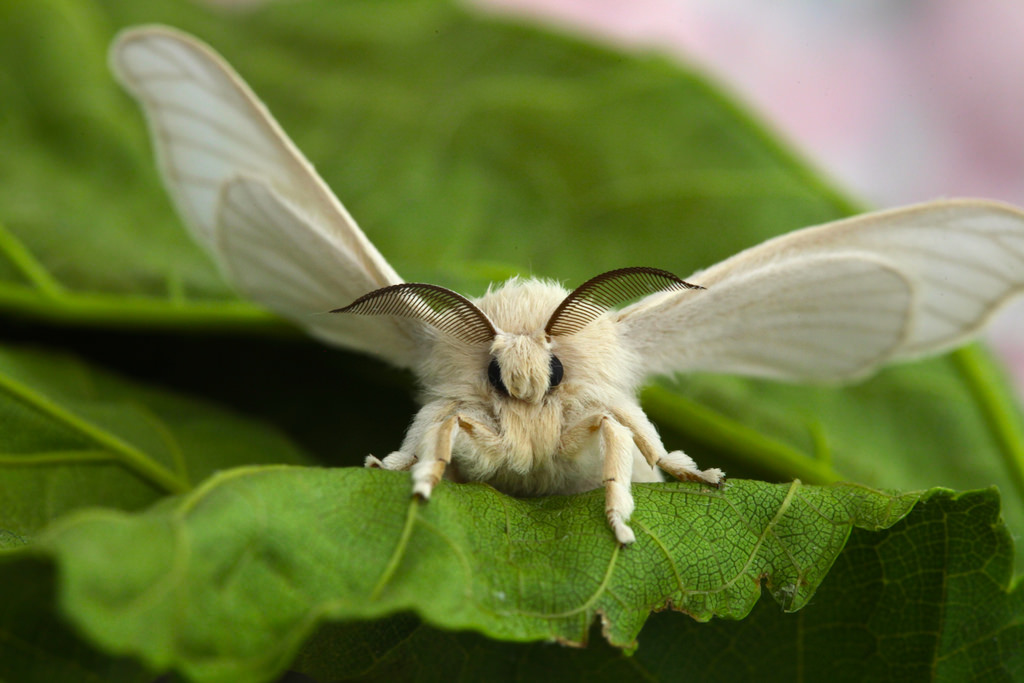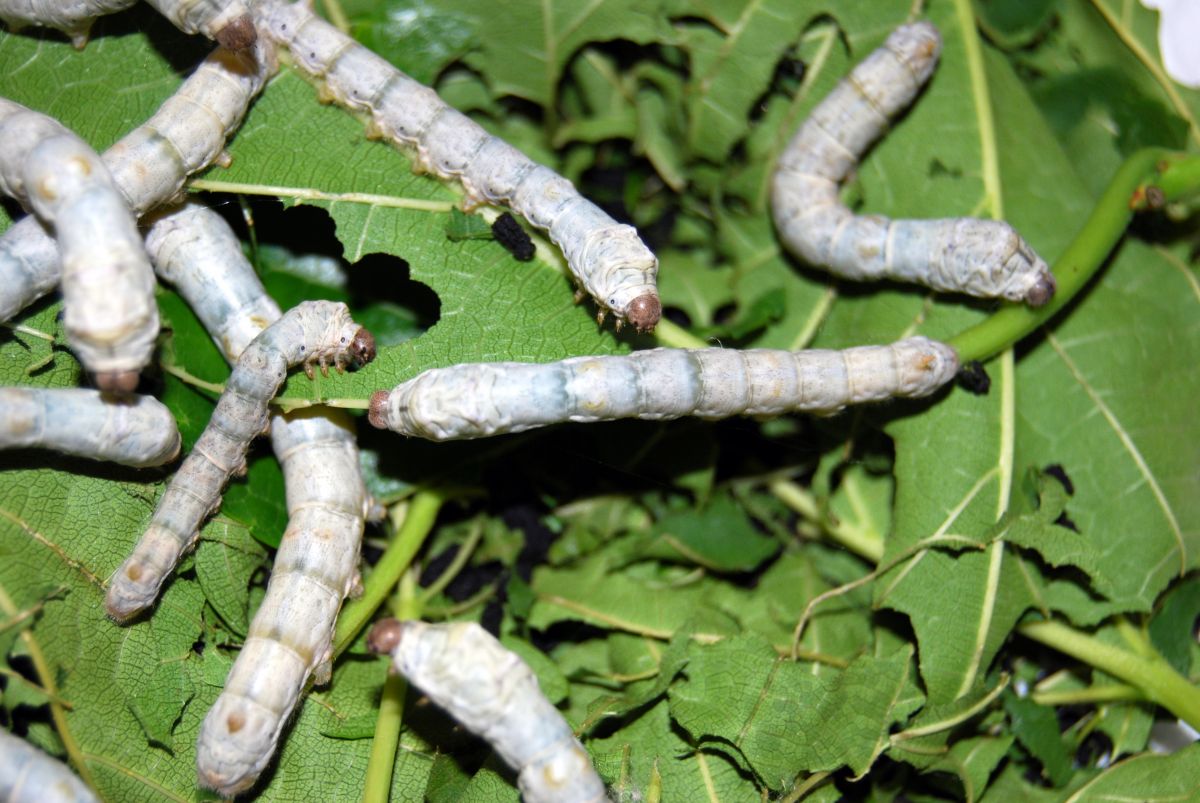Silk products stand for elegance and beauty, but a look behind the production of silk shows a different picture.
Where does silk come from?
 The so-called silkmoth is spinning the silk that is nowadays available everywhere. As a caterpillar, it feeds fresh leaves from the mulberry tree for 4 weeks, after which it spins its cocoon and dodges. Usually, they hatch 18 days later as a night butterfly. Because the butterflies soften the cocoon with a secretion and subsequently destroy it through the bite, the silk production does not lead to hatching. The spun larvae are killed shortly before either with water vapor, hot air or in the microwave. The cocoons are then placed in a hot bath to dissolve the adhesive that binds the silk threads. After the upper layer has also been combed from short and tangled fibers, the thread can be unwound and reused.1
The so-called silkmoth is spinning the silk that is nowadays available everywhere. As a caterpillar, it feeds fresh leaves from the mulberry tree for 4 weeks, after which it spins its cocoon and dodges. Usually, they hatch 18 days later as a night butterfly. Because the butterflies soften the cocoon with a secretion and subsequently destroy it through the bite, the silk production does not lead to hatching. The spun larvae are killed shortly before either with water vapor, hot air or in the microwave. The cocoons are then placed in a hot bath to dissolve the adhesive that binds the silk threads. After the upper layer has also been combed from short and tangled fibers, the thread can be unwound and reused.1
Animal welfare
Only a few are aware of the fact that silk is an animal cruelty of the worst kind. Like other insects, caterpillars are sensitive creatures. For the silk production they are thrown into hot water alive or are killed with other heat sources, an extremly agonizing death. For the production of 250 grams of silk, about 3,000 silkworms are killed.2
Ecology
 For further processing, only the inner layer of the cocoon is used. Therefore, up to 10 kg of the cocoon is required for 1 kg of raw silk. In order to gain 3 kg of silk one needs over 25 mulberry trees as food for the caterpillars.3
For further processing, only the inner layer of the cocoon is used. Therefore, up to 10 kg of the cocoon is required for 1 kg of raw silk. In order to gain 3 kg of silk one needs over 25 mulberry trees as food for the caterpillars.3
Lots of shotcrete and pesticides are used to grow this feed. This measure kills other insects that would also eat mulberry leaves. As a result, the silk industry has a massive waste of resources with a great impact on the ecosystem.
A lot of sprayed concrete and pesticides are used for the cultivation of this feed. This measure kills other insects which would also eat mulberry leaves. The silk industry is a massive resource waste with a great impact on the ecosystem.
Alternatives
Animal-friendly alternatives to silk are, for example, nylon, polyester, microfibers, fibers from the seed pods of the silk plant, viscose rayon, cotton silk or fibers of the kapok tree.
These materials have the advantage of keeping moths away. These feed on protein fibers and are wagged beside wool and feathers mainly from silk and then perforate your textiles in the closet. Synthetic and vegetable materials are less susceptible and even need less care.
There is also a so-called silk, which is produced without killing the caterpillars. Even if it is nevertheless an animal product, it is here rather a waste product of the caterpillar. In this production, you give each caterpillar a loophole and let the scorched cocoons rest. This gives the caterpillars time to turn and leave the cocoon. The extraction of the silk thread is generally more elaborate, which explains the higher price of this silk. Since the silk threads are partially cut, the length is not so long. This leads to a less optimal quality of the silk. Therefore, such a silk has only a niche market.4
What can you do?
- Avoid fashion products made of silk (scarves, ties, scarves, shirts, blouses, dresses, etc.)
- Avoid cosmetic products with silk protein and ask manufacturers of such products to offer them without silk protein
- Avoid hygienic items (sanitary napkins, tampons) containing silk protein, and ask the manufacturers of such products to replace the silk protein with vegan alternatives.
1. Bärbel Heidenreich, Planet Wissen «Seide», 07.09.2015
2. Animal Equality, «Wolle/Daunen/Seide»
3. Jörn Haack, «Wissenswertes über Seide»
4. Dr. Matias Langer, «Bio-Ahimsa-Seide»

